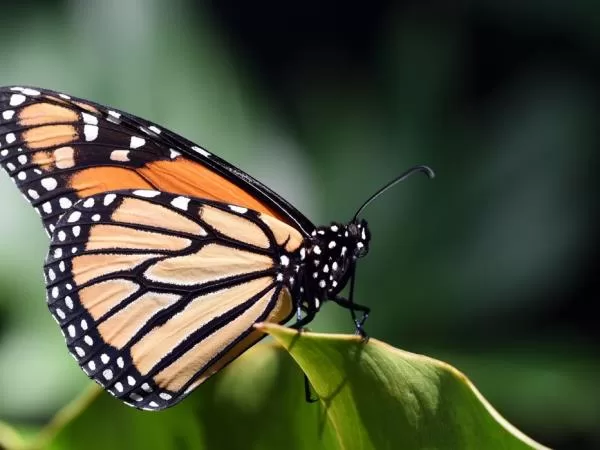More than just a symbol of beauty and grace, the monarch butterfly is a true warrior of nature. Each delicate flutter of its wings masks the incredible challenges it faces—long migrations, harsh environments, predators, and the ever-growing threat of habitat loss. Yet, despite its resilience, the monarch is now on the brink of extinction, serving as a stark reminder of nature’s fragility.

The Monarch’s Incredible Migration Journey
The monarch’s migration is one of nature’s greatest spectacles. Traveling thousands of miles across North America, these butterflies embark on a journey of endurance that few species can match.
However, climate change, deforestation, and pesticide use threaten their existence, making it essential for us to take action. In the east, only monarchs that emerge in late summer or early fall make the annual migration south for the winter.
As the days get shorter and the weather cooler, they know it’s time to abandon their breeding grounds in the northern U.S. and Canada and head south to the mountains of central Mexico, where it’s warmer. Some migrate up to 4,800 kilometers (3,000 miles).

The Key to Survival: Protecting Their Habitat
Ensuring the survival of the monarch butterfly starts with protecting its habitat. You can play a crucial role by planting native milkweed, the only plant where monarchs lay their eggs, and growing nectar-rich flowers to provide them with essential food sources. Avoiding pesticides, supporting conservation efforts, and spreading awareness are simple yet powerful ways to contribute.

Monarch Butterfly: Facts
Common Name: Monarch butterflies
Scientific Name: Danaus plexippus
Type: Invertebrates
Diet: Herbivore
Group Name: Flutter
Average Life Span: Six to eight months
Size: Wingspan, 9.4 to 10.4 cm (3.7 to 4.1 inches)
Weight: 0.27 to 0.74 grams (0.0095 to 0.026 ounces)
Etymology
The name “monarch” is believed to have been given in honor of King William III of England, as the butterfly’s main color is that of the king’s secondary title, Prince of Orange. The monarch was originally described by Carl Linnaeus in his Systema Naturae of 1758 and placed in the genus Papilio.
Witness the Migration: Monarch Butterfly Tours
For those who dream of witnessing this breathtaking migration up close, several travel agencies offer guided experiences:
Travel Agencies Offering Monarch Butterfly Tours
Several tour operators specialize in monarch butterfly migration experiences:

Multiple sanctuary visits, eco-friendly lodging, and expert-led tours from Mexico City.

Seven-day tours focusing on Monarch Biosphere Reserves in central Mexico.

Guided experiences blending nature and culture.

Small group tours with a focus on sustainability and local conservation efforts.

Get the latest stories, exclusive insights, and special offers delivered straight to your inbox.


